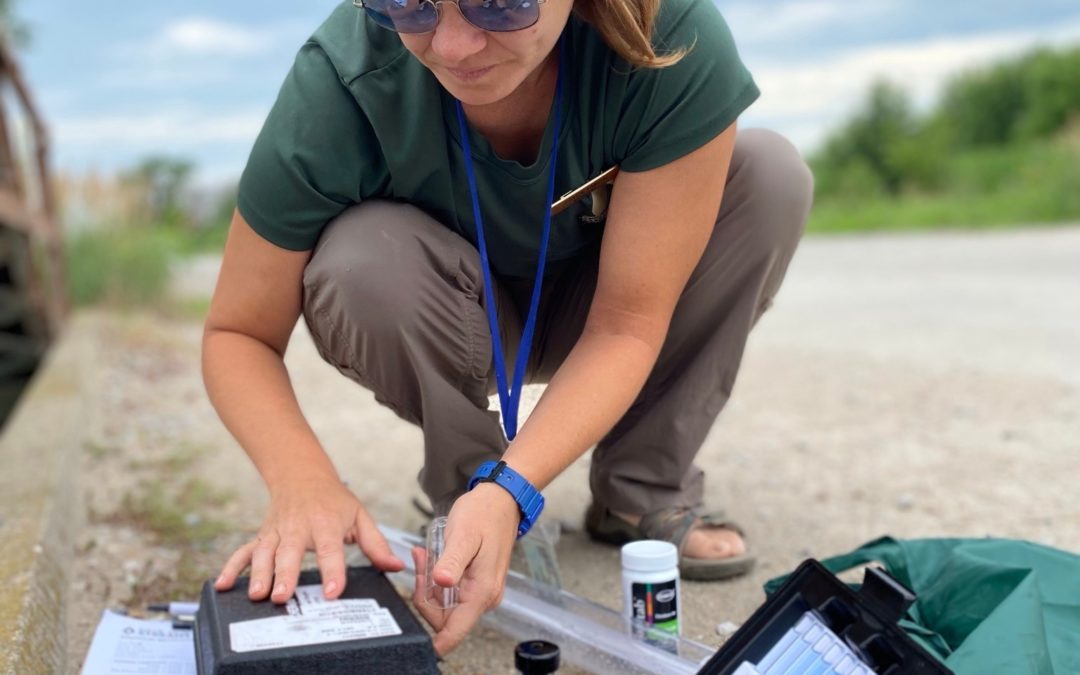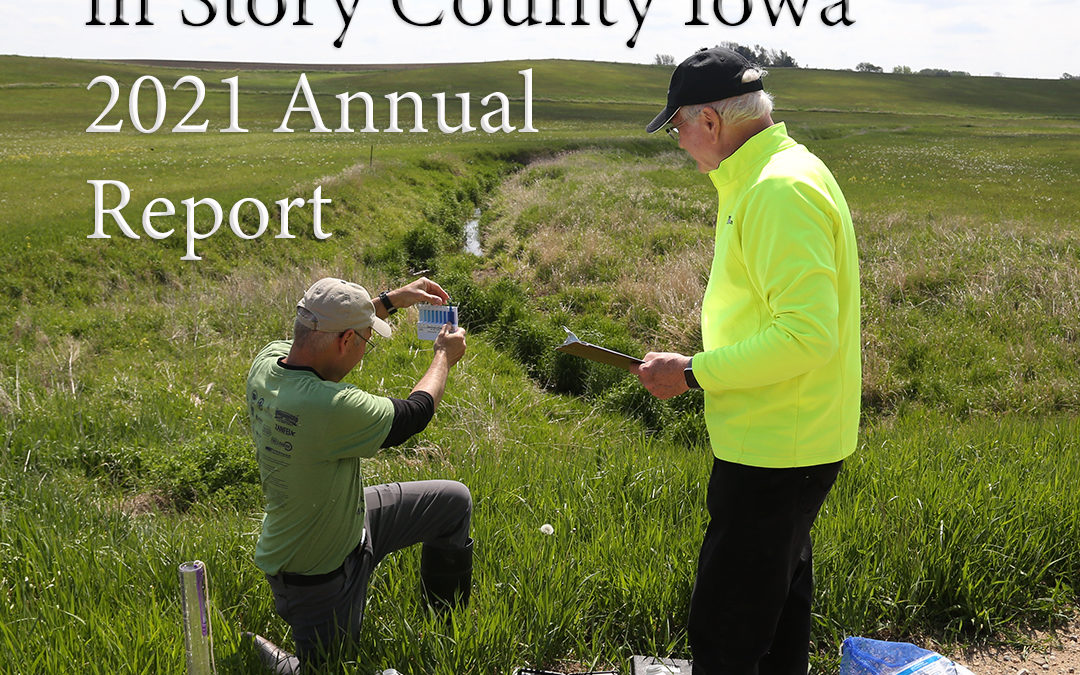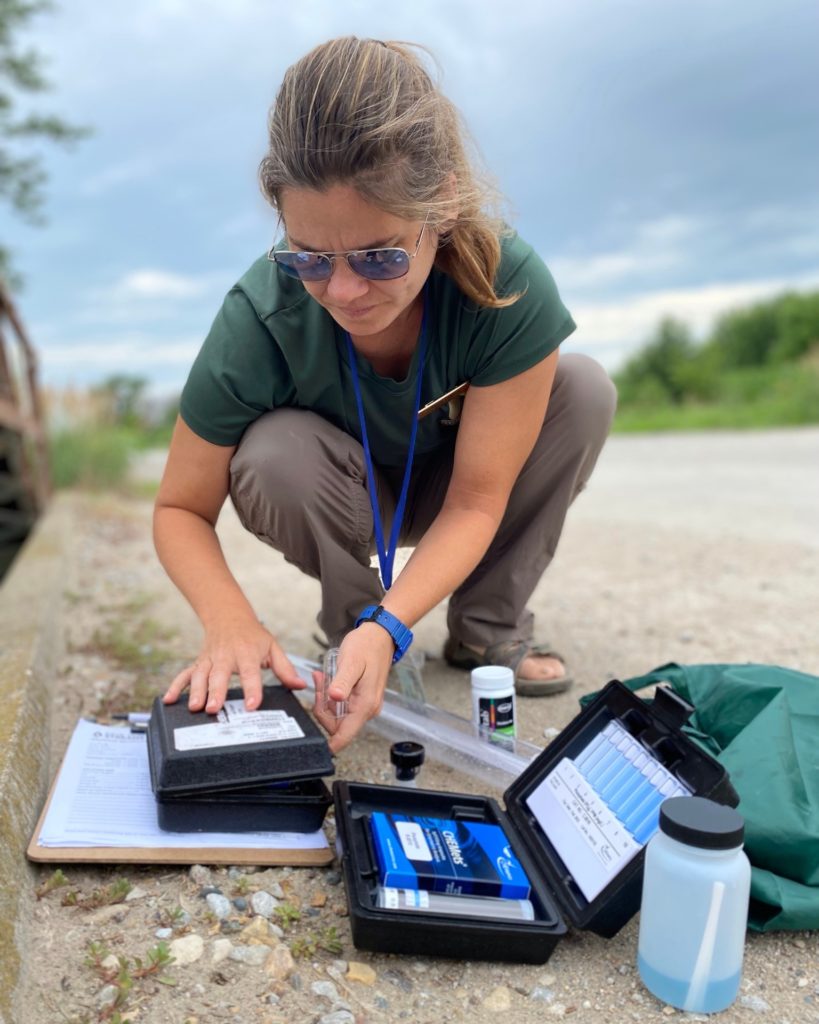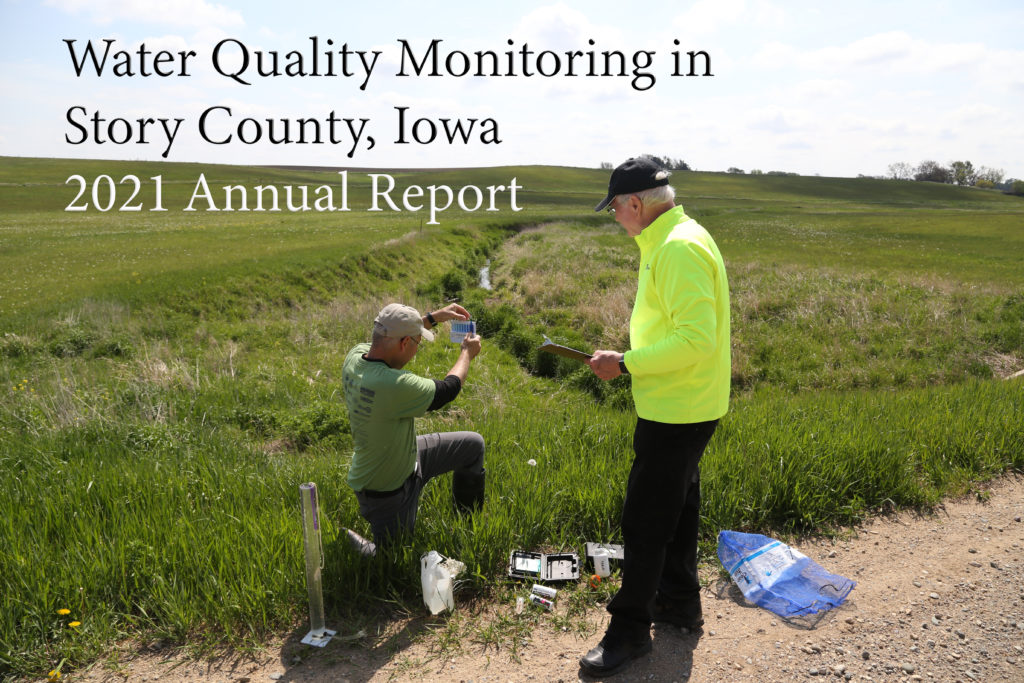
by Dan Haug | Jan 31, 2023
Jess Lancial testing water quality (photo credit Story County Conservation)
Volunteer Water Monitoring in Story County
A round of applause for all the volunteers and Story County Conservation staff who have diligently been monitoring their assigned stream twice a month in all kinds of weather! Also, let’s give a shout-out to the people who work behind the scenes. Sara Carmichael of Story County Conservation keeps everyone on track and equipped with supplies. Heather Wilson of the Izaak Walton League of America provides training and support to volunteers around the state. We rely on the IWLA’s Save Our Streams program for training materials and the Clean Water Hub for data entry. The three of us will be meeting the volunteers at a training event later this month to kick off another great season.
Three ways to get involved:
- There’s room for one or two more volunteers to cover a site in Story County, so contact Sara.
- If you’d like to try water monitoring without committing to a schedule, Prairie Rivers organizes a one-day volunteer event in the Ames area each May, so keep an eye on our events page.
- If you don’t live in Story County, the Izaak Walton League is launching a new Nitrate Watch program and you can request a bottle of test strips while supplies last.
In March, Prairie Rivers will release a report detailing the findings, but for now let’s admire the scale and consistency of the effort, which has really improved since last year. (Updated 2023-02-18 to include some data sheets that were entered late)
Sites tested at least once
Sites tested at least 10 times
Sites tested at least 20 times
Data sheets entered in the Clean Water Hub
Sites tested at least once
Sites tested at least 10 times
Sites tested at least 20 times
Data sheets entered in the Clean Water Hub

by Mike Kellner | Mar 11, 2022
Prairie Rivers of Iowa has just released an annual report investigating water quality in streams and lakes around Story County. Prairie Rivers of Iowa worked with Story County Conservation, the City of Ames, and other partners in 2020 to initiate a locally-led water monitoring program including both volunteer and laboratory testing.
The report’s author Prairie Rivers of Iowa Water Quality Specialist Dan Haug states, “Our partners and volunteers have gone to a lot of trouble to test rivers and lakes across the county, so we take seriously the job of interpreting the data.” He continues, “It’s only the second year of the program, but we’re starting to see patterns that can help us evaluate nutrient reduction efforts and improve our streams for recreation and fisheries.
Volunteer Rick Dietz and Prairie Rivers of Iowa Board President Reed Riskedahl test phosphorous in a tributary of Ioway Creek.
Some of the key findings detailed in the report include the risks of waterborne illnesses, algae blooms in lakes and streams, the impacts to aquatic life and the effects of excess nutrients being sent downstream, eventually to the Gulf of Mexico.
“The water monitoring planning team is working hard to bring together all the resources we can to conduct monthly water testing, equip volunteers, educate elected officials and the public about the many water quality issues in our lakes, rivers and streams,” according to Haug.
In 2021, E. coli bacteria was usually low at swimming beaches and parts of the South Skunk River, but high in most creeks. The influence of nitrogen and phosphorus loads from Story County did not have as much influence on hypoxia contamination to Gulf of Mexico in 2021 due to a dry year, but the plan calls for continued monitoring to determine the effects during normal to wet periods helping to identify hot spots and evaluate whether conservation practices are working.
Water quality monitoring results in Story County did however reveal that during dry conditions in 2021, the highest levels of nitrogen and phosphorus were found below wastewater treatment plants. Wastewater effluent may be contributing to low dissolved oxygen levels in some streams harming aquatic invertebrates yet more monitoring is needed to establish patterns.
Other findings during the past year conclude that untreated stormwater from older neighborhoods has extremely high levels of sediment, phosphorus and bacteria.
Water monitoring was guided by a ten-year plan written by nine local partners and facilitated by Prairie Rivers of Iowa.
Water samples were collected monthly from 15 sites and weekly from three sites, with laboratory support provided by the City of Ames. Story County Conservation launched a volunteer monitoring program with 17 individuals and one business participating. Prairie of Iowa used special hardware to collect samples of runoff from rainstorms.
The entire Story County 10-year Water Quality Monitoring Plan, Annual Report, water quality updates, real-time data and educational articles can be found here.
by Dan Haug | Sep 17, 2019

GIS mapping is a big part of my job, but I’ll be the first to admit there’s a limit to what you can learn about a stream without getting your feet wet, or at least dipping a bucket into the water.
I’ve been testing West Indian Creek and Grant Creek at the lovely Jennett Heritage Area, just above their confluence. (With some help from David Stein and Rick Dietz) West Indian Creek flows through Nevada and drains 28,417 acres at this point. Grant Creek, also known as Drainage Ditch 5, drains 13,344 acres between Ames and Nevada.

Based on soils and landcover in the watershed, I’d expect Grant Creek to have comparable or slightly worse water quality than West Indian Creek. There are nutrient loading models available online and in the Story County Watershed Assessment that predict just that.
Instead, I’ve found that water quality is consistently better in Grant Creek. West Indian Creek has normal nitrate levels but very high phosphorus levels. At this point, I don’t know why.
| Orthophosphate (mg/L) | Grant Creek | W. Indian Creek |
| 5/14/2019 | 0 | 0.6 |
| 6/11/2019 | 0.1 | 1.0 |
| 7/25/2019 | 0 | 3.0 |
| 9/10/2019 (after rain) | 0.6 | 4.0 |
| Nitrate (mg/L) | Grant Creek | W. Indian Creek |
| 5/14/2019 | 2 | 5 |
| 6/11/2019 | 2 | 5 |
| 7/25/2019 | 2 | 5 |
| 9/10/2019 (after rain) | 0 | 0 |
I do know there are people in the West Indian Creek watershed working to improve water quality, both on private land and public land. If you own land or farm in the watershed and are thinking about doing more to conserve soil and water, contact our Watershed Coordinator, David Stein, to set up a free consultation.
If you live near Nevada and are want to help solve the mystery of these two creeks through water testing, contact Dan Haug. Prairie Rivers of Iowa is working with Story County Conservation and the Izaak Walton League to plan for and support volunteer stream monitoring around Story County in 2020.
A final note: Don’t judge a stream by its name, or lack of a name. The lower part of Drainage Ditch 5 is a natural creek with buffer vegetation, fish, clean water, and public access. The map below shows a pre-settlement land survey superimposed over a current topographic map. Interestingly, West Indian Creek was forested while Grant Creek was prairie. Thanks to the restoration efforts of Cindy Hildebrand and Roger Maddux, parts of Grant Creek are prairie once again.








